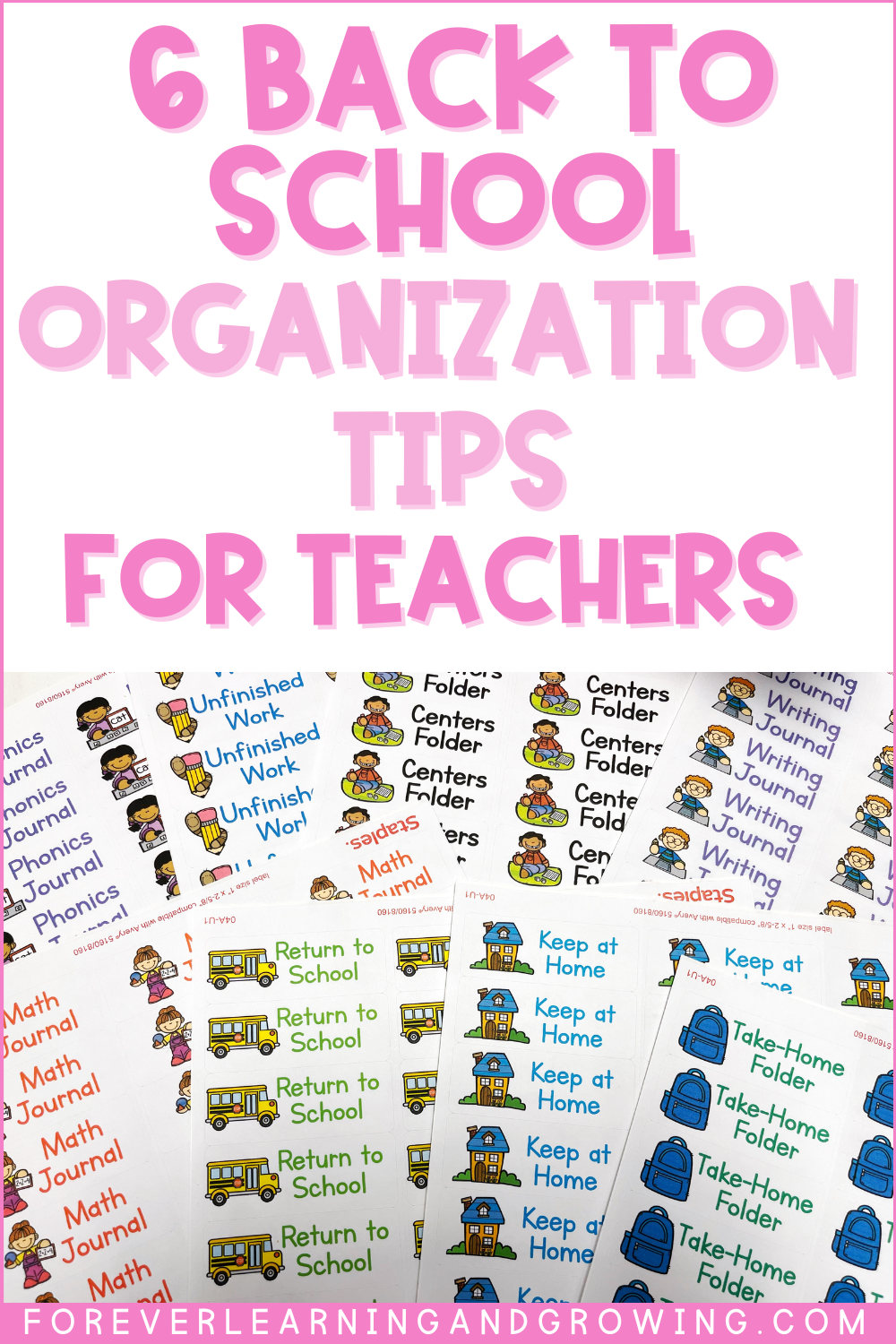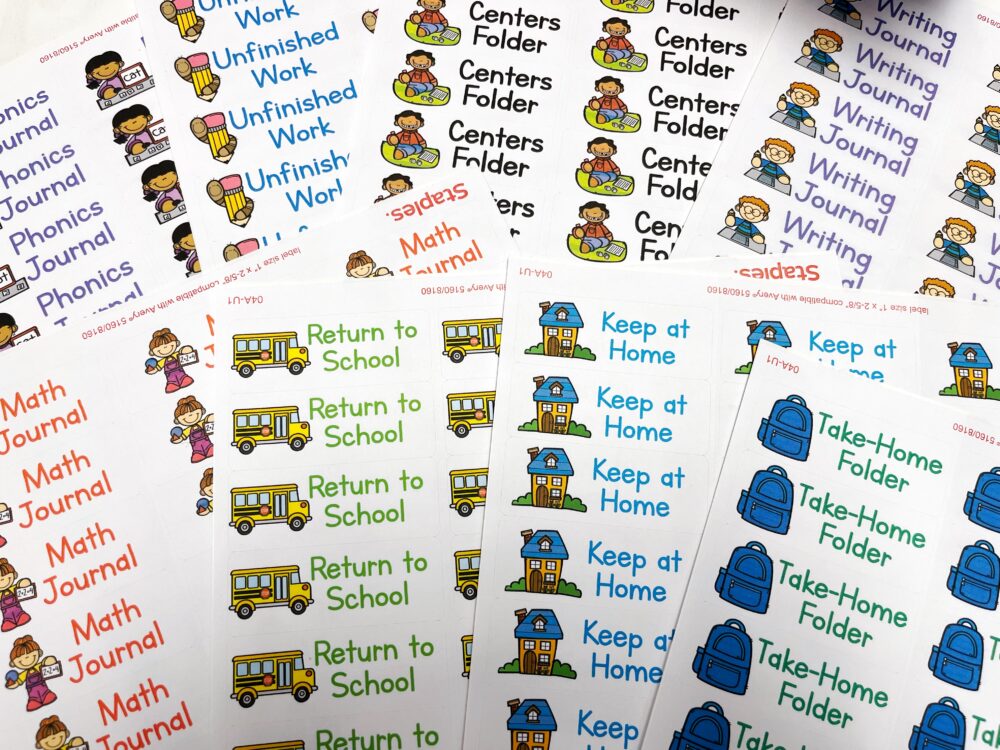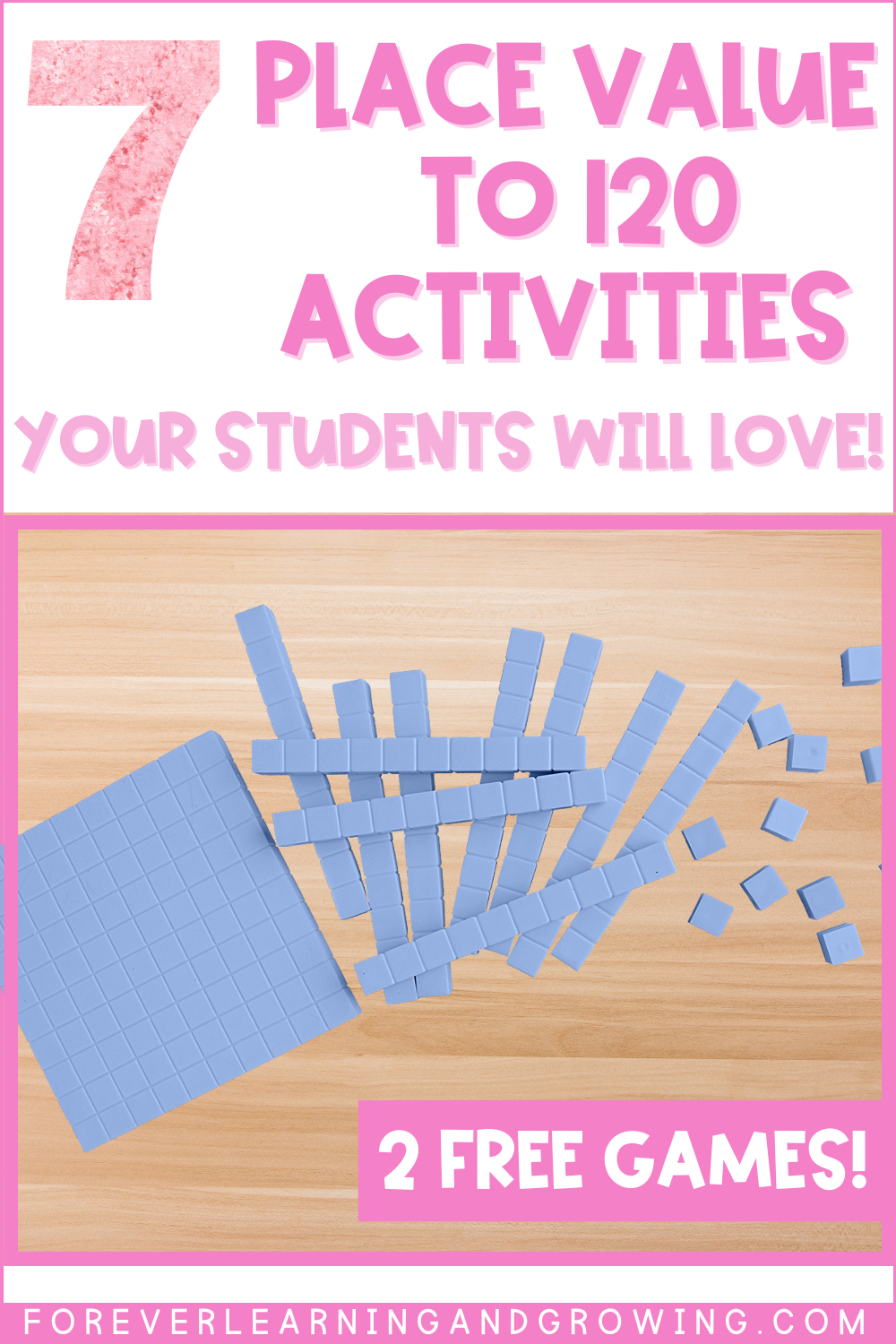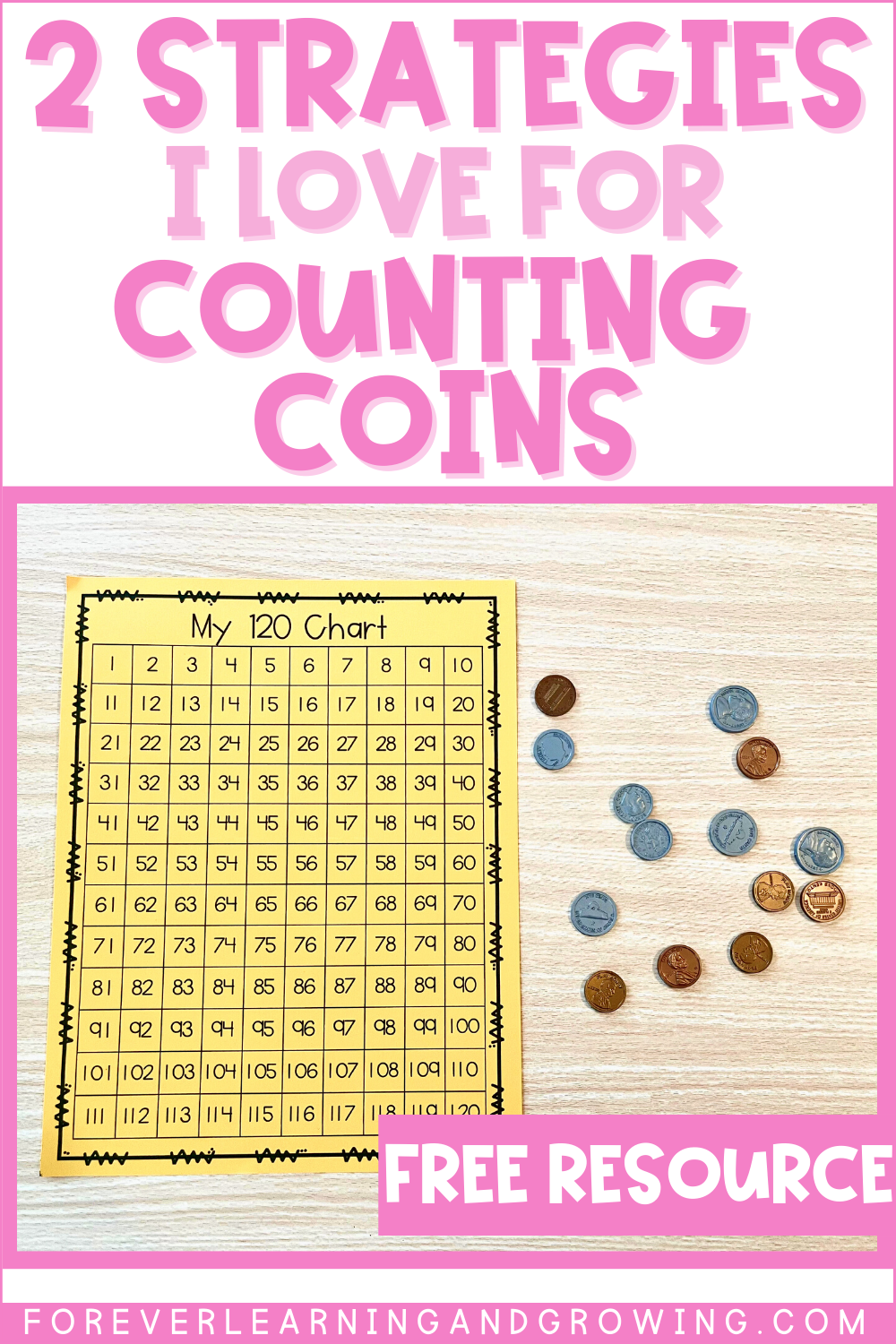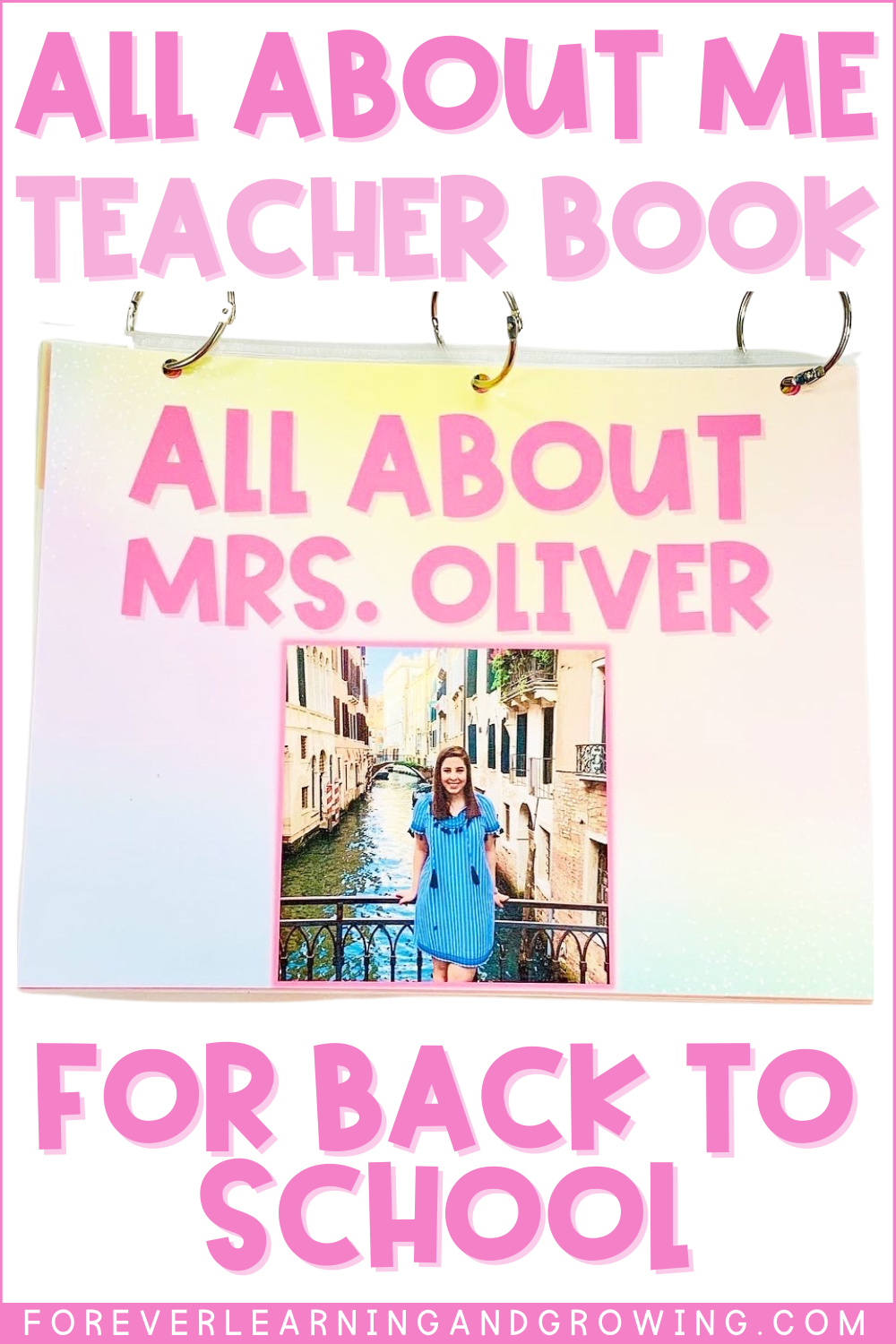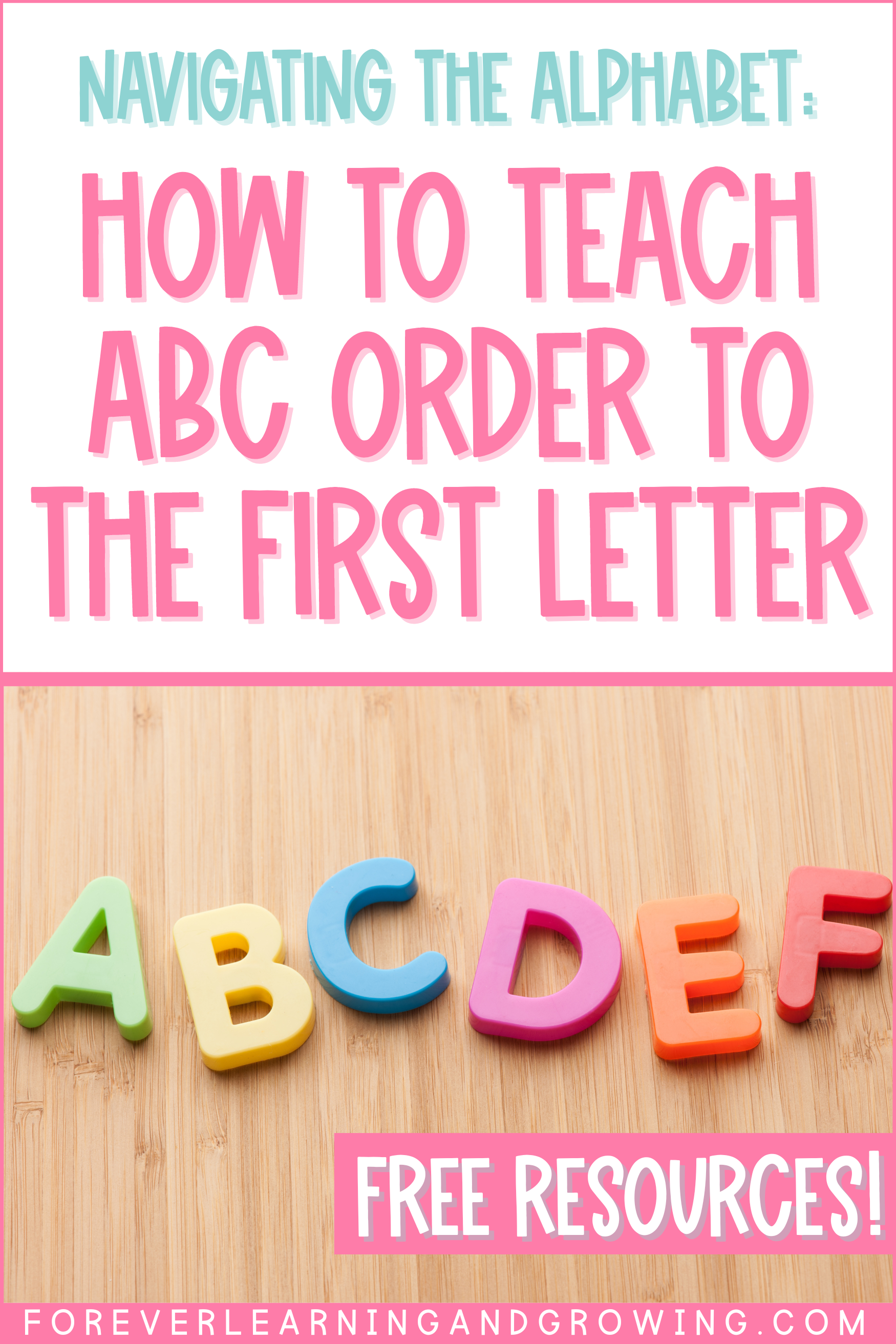6 Back to School Organization Tips for Teachers
(This post contains affiliate links. If you click & purchase, I may receive a small commission at no extra cost to you. I only recommend products & services that I personally use or find value in.)
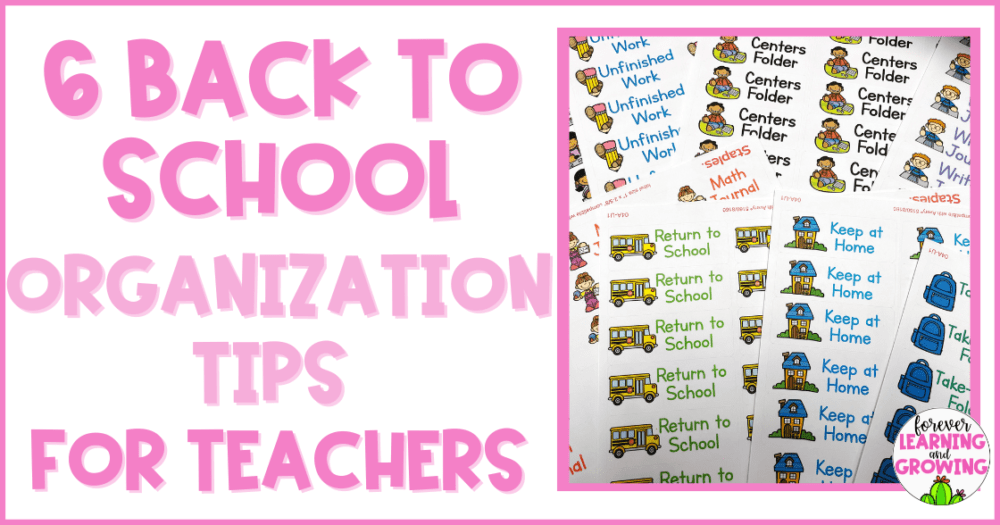
As the back to school season approaches, teachers face the exciting challenge of organizing their classrooms & systems for the year ahead. A well-organized classroom not only enhances efficiency but also creates a positive learning environment. In this blog post, we will explore six back to school organization tips for teachers to start the school year off on the right foot. From setting up a filing system to utilizing technology tools, these strategies will empower teachers to streamline their classrooms and focus on what they do best—teaching!
In this blog post for back to school organization tips, you’ll find:
1. Set up Systems for Filing Papers & Activities
Establishing a reliable filing system is crucial for keeping track of important paperwork and resources. By implementing a filing system, you can reduce the time spent searching for materials and focus more on teaching. I’m the type of person that if something doesn’t have a specific place, I get lazy and shove it somewhere to never be found again… so having places for papers to go is crucial!
This past year I used 6 of these 3 drawer units behind my desk and it worked wonders at keeping me organized (I have one of those cube organizer shelves that I just laid sideways and placed the drawer units in). My labeled drawers I use include drawers for each day of the week as well as ones for next week, to be graded, graded, to copy, to laminate, to be filed, extra copies, important documents, printer paper, cardstock, labels (assorted), return address labels, and trainings.
Decide if you want to use a traditional filing cabinet, a digital filing system, or both. I utilize both but find myself throwing away more and more paper copies each year since everything is on my computer. However, traditional filing systems are great for activities or centers you’ve cut out and want to store. I have my math centers and reading centers organized by concept so I can easily look at what I’m teaching and grab what I need. I loved using these filing crates for storing my fact fluency dominoes so much this year that bought more to store some reading center and small group activities when they aren’t out in center bins.
Finally, I have a filing drawer in my desk that I use to store permission slips, papers to save for open house, and student work/documentation. At the beginning of each year I set up a file folder for every student. Throughout the year, I add in any running records, conference papers, writing samples, work samples for RTI, data reports, etc. so I have one place I can easily look for each student.
2. Create a Daily To-Do List
This back to school organization tip might have been the biggest game changer for me this year. Creating a daily to-do list is something that is so simple to do yet makes the biggest difference in the world. My mind runs at a million miles a minute and while I’m great of thinking of all the tiny details, I forget them if I don’t write them down (I’m the type of person that wakes up at 3am remembering I need to do something and set an alarm for when I get to school to do it!)
My sister gave me a Lilly Pulitzer desk pad for my birthday a few years ago that honestly just sat prettily on my desk until this year. This was the year I decided I was (for the most part) not working beyond contract hours and needed to be efficient with my time. I documented everything on this desk pad every week and it was so satisfying to cross off each task (or even a whole day) when I got done. It let me know exactly what I needed to do and gave me a place to jot down any ideas or tasks that came to me. The desk pad had a section for Saturday & Sunday, but I just used that to jot down random notes. I sometimes even flipped to the next page & wrote tasks for the following week as I thought of them.
I just found out the desk pad I’ve been using isn’t sold anymore– I’m so bummed because I only have a few pages left. However, I searched around on Amazon and found this cute desk pad that’s very similar (and a lot cheaper) that I’ll get once I run out!
One specific back to school organization tip I have for lists is to create a list of everything you need to create that has students’ names on it (name plates, name tags, log in cards, journal labels, etc.) That way when you finally get your class list, you’ll know exactly what to get started on.
Starting each day (or even each week) with a to-do list is a powerful organization strategy. By having a clear roadmap of what needs to be accomplished, you can stay focused and accomplish tasks more efficiently, reducing stress and increasing productivity.
3. Streamline Your Classroom Layout
A well-organized classroom layout can greatly impact the flow of your daily activities. Take time to arrange your classroom in a way that maximizes efficiency and organization. Create designated areas for different activities (I have a set place for each of my reading centers and math centers that students know to go to each time). Arrange desks or tables in a manner that allows for easy movement (this is not always an easy task, I know).
Also ensure that frequently used materials and frequently visited areas are easily accessible to both you and your students. You may not always get it right the first time– I’ve been in my current classroom for 6 years and still made a few tweaks this past year as I saw needed. You can definitely make changes as the school year goes on, but by sitting down and really thinking it out before the school year starts, you can minimize changes for your students. A streamlined classroom layout enhances productivity, minimizes distractions, and supports effective teaching and learning.
4. Label and Color Code
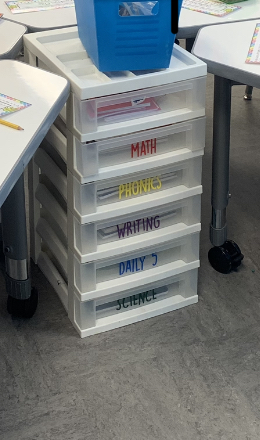
Labeling and color-coding are simple yet effective techniques for back to school organization. Label shelves, bins, drawers, and student materials to ensure everything has its designated place. This visual system helps both you and your students quickly locate and return items to their proper spots, fostering a sense of order and responsibility in the classroom.
The labels I have on the drawers for my center activities match the visual & wording for the center activity on the PowerPoint I display each day, so students know exactly where to look (especially those who can’t read as well). I’ve learned over the years that any time students can utilize a visual, there’s way less confusion.
Each table group in my classroom has this 6 drawer cart (I don’t use the wheels) and we store their High-Frequency Word rings + ID lanyards on top and then each drawer below is the journal for that subject. These carts aren’t the cheapest, but they’ve held up phenomenally over the 6 years I’ve used them and I don’t anticipate having to replace any of them soon. I cut out vinyl with my Silhouette machine to label the drawers.
Consider color-coding different subjects or grade levels using colored bins, folders, or stickers. My table group drawer labels for each subject are in the color of the journal, helping students to know that their green science journal goes inside the green drawer. In my classroom, the green journal is science, red journal/folder is math, purple journal/folder is writing, yellow journal is for phonics, green folder is for take-home, black folder is for nay center papers, and blue folder is for unfinished work. I sometimes add/take away a journal or folder each year depending on what I need/how used it was the year before.
You can use adhesive labels to label journals and folders with content areas & student names. You can create your own labels for journals and folders, or you can make back to school organization a breeze by checking out my Back to School Labels that are ready-to-go and come in a variety of colors/options.
5. Regularly Declutter and Purge
Maintaining an organized classroom requires regular decluttering and purging of unnecessary items. Take the time during this back to school season to clean out cabinets, shelves, and storage spaces. Remove any materials, supplies, or resources that are outdated, damaged, or no longer serve a purpose. Consider donating or repurposing items that may be useful elsewhere. Keep only what is essential and ensure that everything has a designated place.
I used to be that teacher that took everything that veteran teachers were trying to get rid of and would never throw away anything. I was also afraid to throw anything away. As a result, I ended up with a bunch of things I hadn’t even touched in years! I’ve definitely been purging way more the past few years and it feels good to get rid of stuff. It’s really hard to stay organized when you’re hoarding a bunch of things you don’t actually have a place for.
6. Use Technology Tools to Help with Back to School Organization
Work smarter, not harder! Embracing technology can significantly enhance your back to school organization efforts. Last year I used Remind as the communication app in my classroom. As a part of my back to school organization efforts last year, I sat down one afternoon and pre-scheduled all announcements I could think of for the year using my district and school calendar (reminders for events, days off, classroom activities, etc.) It was amazing to have this done at the beginning of the year and just schedule a few, as needed.
Another back to school organization tip is to use PowerPoint or Google Slides to create any seating charts you may neat. I tend to use the shapes option and create circles for my table groups and then just use a rectangular box for each student with their name in the middle. You can color code students and easily make changes, as needed, throughout the year. It can be a lot of work to figure out the initial seating chart of the year, so having a system that allows you to easily move around students is ideal! It’s also easy to share digital charts & print them when you have a sub.
Something I did this year for the first time was make a to-do list for specific tasks related to back to school organization as well as tasks to do once I know my new students’ names (gift labels, personalized bookmarks, log-in cards, desk plates, name tags, bulletin board labels, etc.) I made this list on Google Sheets so that I could easily add to it without running out of room, access it from home over summer or at school, and re-use the same list again next year by just unchecking the boxes.
Lastly, any time you can use technology to make your life easier as you dive into back to school organization efforts, go for it! I used to go to the teacher stores every year and try to find a desk plate for my students that was somewhat cute that I could buy. Fast forward a few years later, and I realized I could create super cute desk plates that had all the resources I wanted on them (and could re-use them year after year without repaying each time). Now all I do is pull up the file every year, type in my students’ names within the file, and print to use in my classroom. Be sure to check out my collection of editable name plates that you can use to speed up your back to school organization efforts!
By implementing these six back to school organization tips, teachers can set themselves up for a successful and well-organized school year. Remember, organization is a personal process, and what works for one teacher may not work for another (and just like with many things, it can take time to figure out what works and what doesn’t work for you). Adapt these tips to suit your teaching style and classroom needs.
By setting up a filing system, labeling and color coding, creating daily to-do lists, streamlining the classroom layout, utilizing technology tools, and regularly decluttering, you can create an environment that fosters learning, productivity, and student success. So, embrace the organization and enjoy a smooth and fulfilling school year!

Want to save this pin for later?
